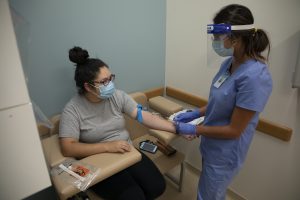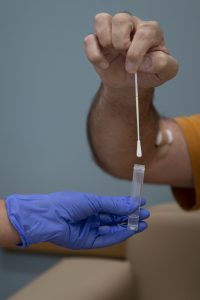At the beginning of the novel coronavirus pandemic, major cities like New York became epicenters for the virus’s spread. It’s no surprise why — millions of people living on a small island was a recipe for disaster. Within the first three months, the city lost nearly 16,000 people to the virus. During one particularly bad week in April, approximately 800 people were dying each day.
But rural populations have also been hit hard.

“The COVID pandemic has been associated with urban centers because of population density and crowding,” says Ross Boyce, an infectious disease researcher at the University of North Carolina at Chapel Hill. “But some of those same risk factors are also at play in rural communities — and that shouldn’t be ignored.”
A recent study led by geography PhD students Katerina Brandt and Varun Goel and UNC Gillings School of Global Public Health postdoctoral researcher Cory Keeler looked at SARS-CoV-2 testing in North Carolina from January to June. Using data from the N.C. Department of Health and Human Services, they identified disparities in testing volume for rural populations in the state. The number of tests per capita received by the Latino population, specifically, were consistently lower than the rate for non-Latino Black and white populations.
“This study is important because it can help public health officials and researchers understand where and for whom more testing may be necessary to track and control the spread of the virus,” Brandt says.
Nearly 40 percent of North Carolina’s population resides in rural communities, according to the 2010 U.S. Census. These environments often have fewer hospitals, which means less access to testing and treatment, and host major agricultural productions with many workers designated “essential.” Such jobs often lack health care benefits like insurance and paid sick leave, making employees more likely to work while ill.
On top of these deficits, two major outbreaks occurred in Chatham County. In April, 74 employees at Mountaire Farms, a poultry plant located in Chatham County, tested positive for COVID-19. That’s 21 percent of the facility’s workforce, many of whom identify as Latino. Later that month The Laurels of Chatham nursing home reported 57 positive COVID-19 cases.

The county has a diverse population, according to Boyce. The northern part includes wealthier communities like Cary and Chapel Hill. Siler City sits on the western border and has a large Latino population, while eastern Chatham has a lot of farmland and manufacturing facilities. This diversity, along with the outbreaks and results from Brandt’s study, make Chatham County an ideal place for testing, according to Boyce.
In partnership with the Chatham County Health Department, Boyce and UNC epidemiologist Allison Aiello are currently leading a longitudinal study in Chatham County to understand how and why SARS-CoV-2 is spreading through this population — data that’s direly needed since most of the current data relies on “imperfect disease markers,” or information that’s easier to access but may not tell the whole story.
“We can look at how many people have been admitted to the hospital or how many people have tested positive, but that doesn’t really tell you about the whole community,” Boyce says. “If 80 percent of people don’t have symptoms or only mild symptoms, then we really don’t know how many people out there have been infected.”
Boyce and his team are randomly selecting households to participate in this study. They hope to enroll at least 300 people, who will be tasked with visiting the clinic once a month for one year to provide a nasal and blood sample. In between visits, volunteers must record their symptoms and complete one self-administered nasal swab every two weeks.
“I’ll admit, it’s a bit of an intense ask,” Boyce shares. “But it’s something we need people to do. Our data should be kind of the ground-level truth because it’s a representative sample. The quality of the information, the rigor of it, is important for us to understand what’s going on in the community.”
Ross Boyce is an assistant professor of medicine in the Division of Infectious Diseases within the UNC School of Medicine.
Katerina Brandt is a PhD student in the Department of Geography within the UNC College of Arts & Sciences and a graduate research assistant with the Carolina Population Center.
Vorun Goel is a PhD student in the Department of Geography within the UNC College of Arts & Sciences and a graduate research assistant with the Carolina Population Center.
Cory Keeler is a postdoctoral research in the Department of Epidemiology within the UNC Gillings School of Global Public Health.
